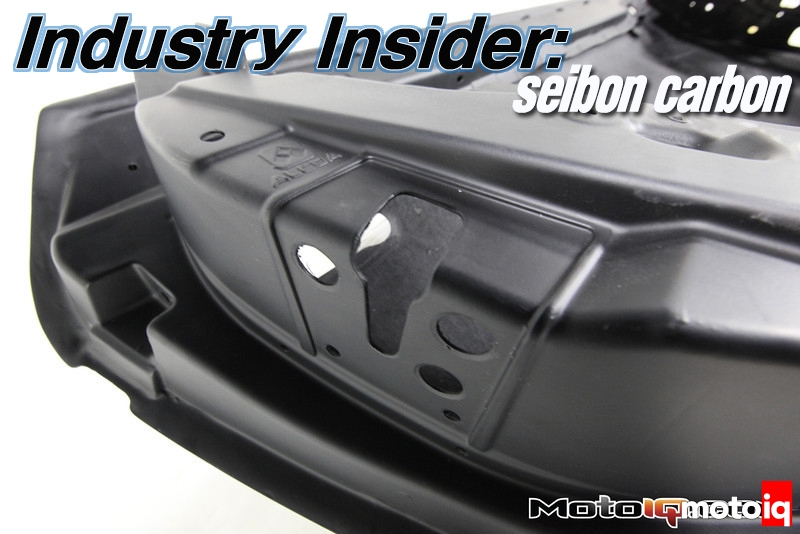
Industry Insider- Seibon Carbon
By Mike Kojima
Seibon Carbon is what we are defining as a second wave Asian performance parts company. A few years ago, our booming performance industry was decimated by several factors, one of which was the economic downturn, another of which was a big influx of fly by night Asian companies that made cheap rip offs of established parts, distributing them with little overhead cost on Ebay and marketing them for free on Forums.
Companies like these flooded the market with shoddy goods some of which were so cheap that they forced many of the original companies that formed our market out of business. This did not just happen in the automotive performance aftermarket but in all markets of all goods on a global scale.
However, something interesting has happened. Our market has shrunk to the point were many of the makers of mass produced junk have turned their sights elsewhere and some of the companies that originally made low cost and low quality copies of successful parts have evolved, getting serious, cleaning up their quality, reinvesting in the market, doing their own development and becoming serious makers of innovative quality parts. This phenomenon happened many years ago in the bicycle world and the performance scooter world where Taiwan for instance makes some of the best parts available.
Now for the composite body panel market Seibon has become one of those companies. Yes, Seibon had started off as a company making copies of other companies' carbon parts, but they are an enthusiast based company and focused on their processes and quality. The evolved Seibon no longer makes copies but releases their own designs and even does the OEM production for many of the top brands of exclusive and super expensive aero kits.
Seibon invited us to their headquarters to take a closer look at some of their products and answer some of our question on how they are made. We know Seibon's quality has improved by leaps and bounds over the past few years. Our Project FR-S has a Seibon hood and decklid and we were very impressed with their fit and finish – which is flawless. No ripples or warps and the gaps to the OEM panels were actually tighter than stock! Let us show you some of the stuff we saw during our visit.
 |
We first looked carefully at Seibon's basic wet carbon parts. Wet carbon isn't sexy but it makes up the bulk of the carbon part market and if done well, wet carbon makes for a strong, light and functional performance part. A wet layup is just that. The mold is first sprayed with a gel coat, a thicker resin that serves as the part's smooth surface finish. Then carbon and fiberglass cloth are layered in the mold and brushed with resin which is usually polyester based. The resin is rolled into the cloth and the excess is squeegeed out. This method is how most aftermarket composites are made and is perfectly adequate. The quality and the strength of the part are very worker skill dependent and a lot of parts are made with too much resin which adds a lot of extra weight. Seibon's wet carbon parts are produced using proprietary techniques for the wet layup which minimize weight, improve appearance and maximize strength. We were told that these techniques are simply refinements of the traditional methods done for better control. Seibon was reluctant to show us because they told us that the refinements were low tech, but highly effective and it would be easy for their competitors to copy them if we showed them. Fair enough. Lets take a look at Seibon's wet carbon Nissan GT-R door as an example of wet carbon done right.
|
 |
At 10.8 lbs each, Seibon's wet carbon GT-R doors are much lighter than the stock parts, saving over 40 lbs per door! However they are only 1.3 lbs heavier than the much more expensive dry carbon parts! The wet carbon doors are still very nice parts. To get a good fit, good tooling is very important and Seibon has learned many lessons over the years on how to improve their tooling. The fit of their latest stuff is very good, some of the best we have seen. On the front surface, the first layer of the door is made of carbon backed by two plys of fiberglass cloth. The carbon gives cosmetic looks and strength while the fiberglass gives stiffness while being much more cost effective than carbon. One thing to note is that Seibon uses fiberglass cloth, not mat or chopper gun fiberglass. Cloth is much stronger and uses less resin, but it is more labor intensive to apply. Look at some of the cheaper carbon parts on the market and you can see that the carbon is backed by unidirectional mat or a criss cross matrix of chopped fiberglass soaked with lots of resin. Some of these cheaper parts can weigh more than stock!
|
 |
The back sides of the doors are made of fiberglass and are perfect replicas of the stock doors. This means that the inner door panels, hinges, locks, handles, speakers and even window regulators and tracks can all be kept in place and functional. Even the areas where the seals mount are functional. This means that the door is made up of several different molds with components that must be bonded together. We don't think street cars should be driven with these doors without a cage as they are lacking the OEM door's steel side impact beams, but the doors save much of the weight that a cage adds! The Seibon doors do have molded ribbed internal supports for strength though, so the door is not a weak floppy part.
|
 |
The hinge areas of the doors are reinforced to reduce door flop. Look at the detail here!
|
 |
| The lock and door handle areas are also reinforced with more cloth. All the stock interior parts can go on and you would never know that this is a composite door. Of course if you have a race car, you can cut much of the inner parts out to make clearance for NASCAR style door bars. |



